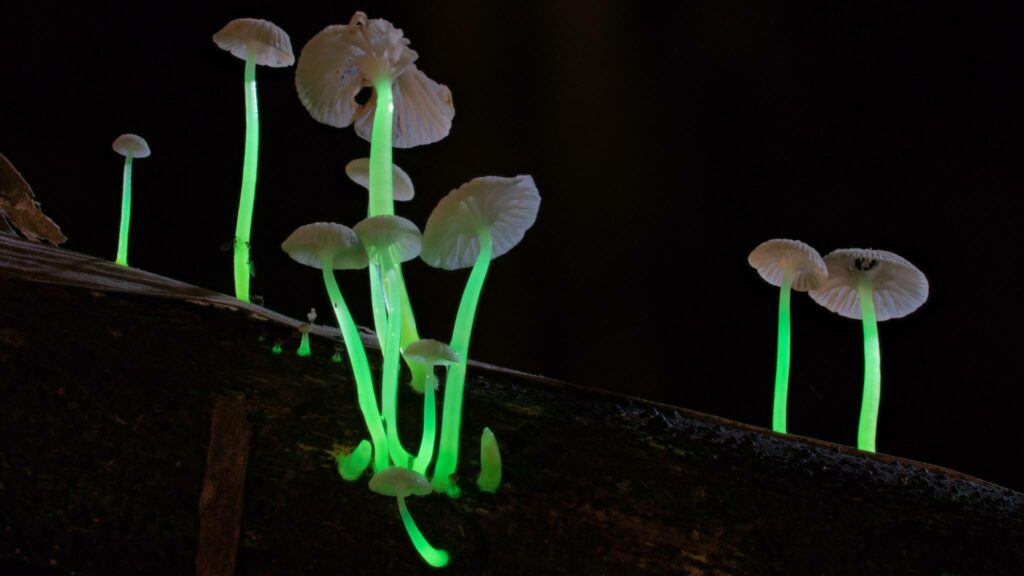A new species of mushroom has been discovered in the Assam province, northeastern India. It glows.

A team of researchers from India and China reports on two weeks of fieldwork in the Assam region, during which they spotted several new species of mushrooms. The most exciting of these is a species that locals describe as “electric mushrooms” that lives on dead bamboo. The species, christened Roridomyces phyllostachydis is bioluminescent — it produces its own light.
Glow up
“The members of the genus Roridomyces are very fragile and they love moist and humid conditions,” explained Samantha Karunarathna, senior mycologist at the Chinese Academy of Sciences and lead author of the report.
“In general, bioluminescent mushrooms seem to have co-evolved together with some specific insects as these mushrooms attract insects to disperse their spores.”
The species may be new to science, but locals have known about (and used) it for quite a while now. They’ve been employing bamboo sticks with these glowing mushrooms growing on them as natural torches at night, for example.
It only grows on dead bamboo, the team explains, although it’s not immediately apparent why. It may be the case that the bamboo substrate offers special conditions or resources that the fungus prefers, according to Karunarathna, but until the issue is researched more thoroughly, we can’t know for sure. This is the first species of the genus Roridomyces to be discovered in India, the team adds.
The team recovered samples of the mushrooms, dried them, and then performed a genetic analysis to understand where it fits on the tree of life. Both morphological features and its genetic heritage support its position as a new species in the genus Roridomyces. Currently, 12 other species are known in this genus, and five of them are also bioluminescent. The team named the species phyllostachydis after the genus of the host bamboo tree (Phyllostachys) from which it was collected.

During the day, they look pretty unassuming. However, at night they glow with a clear, green light — but only from its stripes and mycelia (which are a rough equivalent to roots) that are burrowing into the bamboo. The mushrooms’ brown caps do not emit light at all.
So why does it glow? Bioluminescence is most commonly seen in ocean environments than on dry land, although fireflies are iconic examples of the latter. Its typically used to attract attention, either for hunting or to coax insects into visiting a plant and spreading its pollen or seeds around. Of about 120,000 described fungus species, around 100 are known to be bioluminescent; only a handful of these are native to India. This is likely due to the fact that there aren’t enough trained specialists to go out and look for new species and document those that have already been discovered, Karunarathna argues.
Bioluminescent fungi commonly grow on decaying wood and are able to feed on the lignin in plant debris (lignin is a structural component in the walls of plant cells, which gives them their stiffness). The largest genus of bioluminescent fungi we know of is the Mycena (bonnet mushrooms), and genetic studies of Mycena suggest that this trait evolved around 160 million years ago.
The paper “Roridomyces phyllostachydis (Agaricales, Mycenaceae), a new bioluminescent fungus from Northeast India” has been published in the journal Phytotaxa.









